CASC21, a FOXP1 induced long non-coding RNA, promotes colorectal cancer growth by regulating CDK6
- PMID: 32584787
- PMCID: PMC7343488
- DOI: 10.18632/aging.103376
CASC21, a FOXP1 induced long non-coding RNA, promotes colorectal cancer growth by regulating CDK6
Abstract
Emerging studies indicate that long non-coding RNAs (lncRNAs) play crucial roles in colorectal cancer (CRC). Here, we reported lncRNA CASC21, which is induced by FOXP1, functions as an oncogene in CRC. We systematically elucidated its clinical significance and possible molecular mechanism in CRC. LncRNA expression in CRC was analyzed by RNA-sequencing data in TCGA. The expression level of CASC21 in tissues was determined by qRT-PCR. The functions of CASC21 was investigated by in vitro and in vivo assays (CCK8 assay, colony formation assay, EdU assay, xenograft model, flow cytometry assay, immunohistochemistry (IHC) and Western blot). Chromatin immunoprecipitation (ChIP), RNA immunoprecipitation (RIP) and luciferase reporter assays were utilized to demonstrate the potential mechanisms of CASC21. CASC21 is overexpressed in CRC and high CASC21 expression is associated with poor survival. Functional experiments revealed that CASC21 promotes CRC cell growth. Mechanistically, we found that CASC21 expressed predominantly in the cytoplasm. CASC21 could interact with miR-539-5p and regulate its target CDK6. Together, our study elucidated that CASC21 acted as an oncogene in CRC, which might serve as a novel target for CRC diagnosis and therapy.
Keywords: CASC21; CDK6; colorectal cancer; lncRNA; miR-539-5p.
Conflict of interest statement
Figures
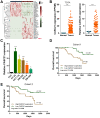
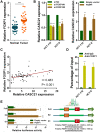
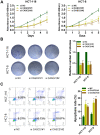
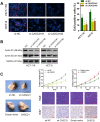
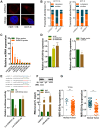
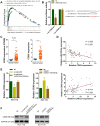
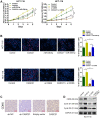
Similar articles
-
LncRNA CASC21 induces HGH1 to mediate colorectal cancer cell proliferation, migration, EMT and stemness.RNA Biol. 2021 Oct 15;18(sup1):369-381. doi: 10.1080/15476286.2021.1950464. Epub 2021 Aug 10. RNA Biol. 2021. PMID: 34375566 Free PMC article.
-
Long noncoding RNA CASC21 exerts an oncogenic role in colorectal cancer through regulating miR-7-5p/YAP1 axis.Biomed Pharmacother. 2020 Jan;121:109628. doi: 10.1016/j.biopha.2019.109628. Epub 2019 Nov 12. Biomed Pharmacother. 2020. PMID: 31731190
-
Long noncoding RNA RP11-757G1.5 sponges miR-139-5p and upregulates YAP1 thereby promoting the proliferation and liver, spleen metastasis of colorectal cancer.J Exp Clin Cancer Res. 2020 Oct 6;39(1):207. doi: 10.1186/s13046-020-01717-5. J Exp Clin Cancer Res. 2020. PMID: 33023613 Free PMC article.
-
LncRNA SNHG15: A potential therapeutic target in the treatment of colorectal cancer.Chem Biol Drug Des. 2023 May;101(5):1138-1150. doi: 10.1111/cbdd.14036. Epub 2022 Feb 27. Chem Biol Drug Des. 2023. PMID: 35191201 Review.
-
Non-coding RNAs as Biomarkers for Survival in Colorectal Cancer Patients.Curr Aging Sci. 2024;17(1):5-15. doi: 10.2174/1874609816666230202101054. Curr Aging Sci. 2024. PMID: 36733201 Review.
Cited by
-
FOXO1-Induced miR-502-3p Suppresses Colorectal Cancer Cell Growth through Targeting CDK6.J Oncol. 2023 Jan 29;2023:2541391. doi: 10.1155/2023/2541391. eCollection 2023. J Oncol. 2023. PMID: 36755807 Free PMC article.
-
FEZF1-AS1 drives autophagy-mediated progression of colon cancer and reduces chemosensitivity through inhabiting the PI3K/AKT/mTOR signaling pathway.Front Genet. 2025 Jul 24;16:1514205. doi: 10.3389/fgene.2025.1514205. eCollection 2025. Front Genet. 2025. PMID: 40778223 Free PMC article.
-
LncRNA CASC21 induces HGH1 to mediate colorectal cancer cell proliferation, migration, EMT and stemness.RNA Biol. 2021 Oct 15;18(sup1):369-381. doi: 10.1080/15476286.2021.1950464. Epub 2021 Aug 10. RNA Biol. 2021. PMID: 34375566 Free PMC article.
-
An integrated analysis of the anticarcinogenic role of forkhead box protein 1 in oesophageal squamous cell carcinoma.J Cell Mol Med. 2024 Apr;28(8):e18294. doi: 10.1111/jcmm.18294. J Cell Mol Med. 2024. PMID: 38652109 Free PMC article.
-
HOXA9 versus HOXB9; particular focus on their controversial role in tumor pathogenesis.J Appl Genet. 2024 Sep;65(3):473-492. doi: 10.1007/s13353-024-00868-x. Epub 2024 May 16. J Appl Genet. 2024. PMID: 38753266 Review.
References
Publication types
MeSH terms
Substances
LinkOut - more resources
Full Text Sources
Medical
Miscellaneous

